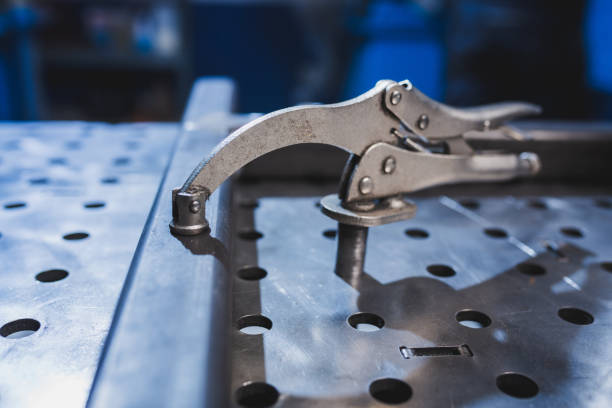Contents
Table of Contents:
- Introduction to Strut Clamps
- The Basics of Strut Clamps
- Industrial Applications and Benefits
- Selecting the Right Strut Clamp
- Common Questions About Strut Clamps
- Installation Tips for Optimal Performance
- Maintenance and Longevity
- Innovative Uses for Strut Clamps
Introduction to Strut Clamps
In the complex world of industrial applications, strut clamps stand out as crucial components for maintaining infrastructure integrity. They’re not just simple metal clips; they are engineered to provide security and support. From construction sites to automotive workshops, their functionality helps reduce downtime and enhance the robustness of installations. With a growing emphasis on safety and durability in these industries, understanding how strut clamps can contribute to your project’s success is more relevant than ever.
The Basics of Strut Clamps
Strut clamps are made from high-performance materials such as stainless steel and galvanized metals, chosen for their resistance to rust and strength. These clamps come in multiple configurations, including cushioned varieties that protect against vibrations and shocks. This makes them highly adaptable to different environments, where they can either hold pipelines securely in place or allow for efficient energy conduction through cables. Paired with strut fittings, they provide a versatile and reliable solution for creating robust support systems. Their design also includes features like interlocking teeth and easy-to-tighten screws, ensuring they stay in place without causing damage to the structures they support.
Industrial Applications and Benefits
The versatility of strut clamps makes them indispensable across various industries. They support HVAC systems, electrical conduits, and fire sprinkler systems in construction. Automotive industries rely on them to secure parts within engines, preventing undue wear and tear during operation. Additionally, they are used in the energy sector to organize cables in renewable energy installations, proving their utility even in emerging fields. Each application underscores its contribution to cost efficiency and task simplification. The value they add in facilitating straightforward, reliable configurations is clear—these engineering marvels continue to benefit users through improved project outcomes.
Selecting the Right Strut Clamp
Selecting a suitable strut clamp for your application involves evaluating numerous factors. It starts with understanding the physical and chemical environment where they’ll be used—a critical step in avoiding corrosion and ensuring longevity. Engineers also consider the mechanical load and compatibility with other components, such as securing pipes or supporting cables. Knowing these details helps prevent installation failures, making the selection and design phase as critical as the installation itself.
Common Questions About Strut Clamps
Strut clamps prompt a plethora of inquiries during the selection and utilization phases. Typical questions might concern the life expectancy in specific environments, customization options to fit bespoke projects or potential suppliers’ comparative reliability. Staying updated on industry trends can clarify these topics, offering a broader context of material advancements and innovations that might impact your choice. It’s crucial to ask these questions upfront to avoid complications down the line, ensuring a seamless implementation process.
Installation Tips for Optimal Performance
Installing strut clamps correctly ensures they perform their task efficiently over their expected lifespan. A well-executed installation involves several steps, including assessing the surface for irregularities and ensuring it’s clean. The placement should align with structural requirements, maintaining balance and load distribution. Attention to detail during installation can prevent common issues like slipping or inadequate support, which might compromise safety and effectiveness.
Maintenance and Longevity
Strut clamps are designed for durability, but like all equipment, they thrive with proper maintenance. Regular inspections to check for signs of wear, corrosion, or any other environmental damage are vital. Confirming that all components remain fastened correctly and free from rust or debris can prevent smaller issues from escalating into larger, more costly problems. Implementing a scheduled maintenance routine could extend the lifespan of strut clamps, reducing costs associated with replacements and repairs.
Innovative Uses for Strut Clamps
Strut clamps are not confined to traditional industrial uses; their adaptability lends to creative applications, too. Landscape architects may incorporate them in outdoor designs to support arches or garden pathways. In the arts, they can provide structural support for sculptures and installations, showcasing their strength and discretion. Such innovative uses emphasize the endless possibilities of thinking outside the box, proving that these clamps are as functional as they are flexible.

